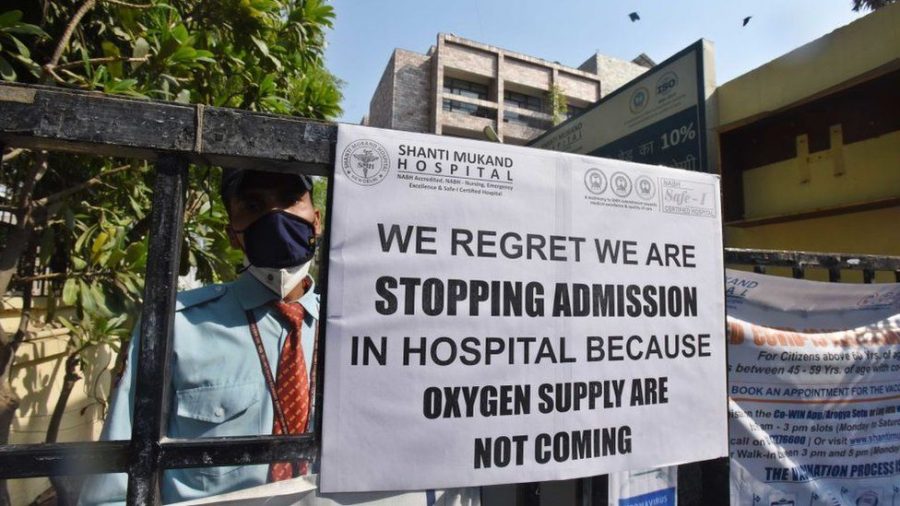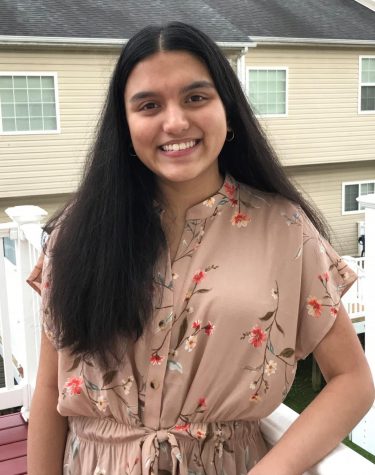Could India’s Second Coronavirus Wave Have Been Prevented?
May 21, 2021
During a virtual address at the World Economic Forum held in late January, Indian Prime Minister Narendra Modi proudly declared that India “has saved humanity from a big disaster by containing corona effectively.”
Approximately four months later, India is now battling its second wave of the COVID-19 outbreak, which has become even more deadly and devastating than the first.
Vikas Pandey of BBC News states that at the beginning of 2021, “the national number of daily cases [in India] fell to under 20,000 from peaks of around 90,000 in September last year.” As India experienced a plateau in coronavirus cases, Prime Minister Modi viewed the situation as an opportunity to ease pandemic restrictions by opening up places for public gatherings. Although Modi continued to emphasize the importance of wearing masks and social distancing, he allowed public gatherings to be attended unmasked and in large concentration. Consequently, an increasing number of Indians soon no longer cared about following safety protocols. Political rallies, religious festivals, and other mass events occurred as was typical in the pre-COVID world.
According to the New York Times “India Coronavirus Map and Case Count,” the new surge in COVID-19 cases began around mid-March 2021 when the number of daily cases climbed over 35,000 and the number of deaths was quickly approaching 200. By mid-April, 35,000 cases turned into 250,000 and 200 deaths became more than 1,500. On May 6th, the second wave reached its peak with over 414,000 cases and almost 4,000 deaths. As of May 17th, India reports around 263,000 daily cases and 4,300 deaths.
“India is a critical supplier in the global effort to vaccinate people against the coronavirus,” expresses Sameer Yasir, Shashank Bengali, and Rick Gladstone of the New York Times. Although India is the world’s leading producer of AstraZeneca vaccines, the nation has struggled to make vaccines accessible for its own citizens. Only 3% of Indians have been fully vaccinated and 9.2% have received at least one dose. In a population of nearly 1.4 billion people, these percentages are too small to cause a substantial impact on India’s infection rate. In an attempt to overcome this shortage, Modi “has placed a temporary hold on all exports of AstraZeneca [vaccines]” to be utilized in the country instead, reports BBC News.
Since 2006, India has been a member of BRICS, a grouping acronym that refers to the world’s “five major emerging economies: Brazil, Russia, India, China, and South Africa,” according to infobrics.org. India’s spending on healthcare is relatively low compared to the other BRICS countries. Pandey of BBC states that the country’s spending “has been around 3.6% of GDP for the past six years … Brazil spent the most at 9.2%, followed by South Africa at 8.1%, Russia at 5.3% and China at 5% in 2018.” Additionally, data from the World Bank reports that India only has 0.9 physicians per 1,000 people, which is less than the world average of 1.6.
Within the span of two months, the Indian healthcare system has been drastically affected by its low governmental budget as it continues to be overwhelmed by new coronavirus cases. “Clinics across the country have reported an acute shortage of hospital beds, medicines, protective equipment and oxygen,” conveys the New York Times. As tens of thousands of people with COVID-19 are admitted to hospitals every day, the demand for these necessities is increasing far greater than the existing supply. As a result, many infected Indians are left “abandoned to die” while waiting for assistance and treatment.
Fortunately, at least 40 countries around the world are pooling efforts to help India fight this catastrophic crisis. According to the Hindustan Times, “major powers such as the US, Russia, France and Germany, have committed to [providing] urgently needed items and Indian and foreign corporations are helping with procurements.” Indian Foreign Secretary Harsh Shringla has expressed that the nation will shortly be receiving more than 500 oxygen generating plants, more than 4,000 oxygen concentrators, more than 10,000 oxygen cylinders, 17 cryogenic oxygen tankers, and several other materials.
Many Indians are placing the blame for the second COVID-19 wave on Prime Minister Modi and his administration. “As it became clear India’s cases were spiraling, Modi stayed largely silent — and a second nationwide lockdown that some expected never came. In a national address last month, he actively advocated against a nationwide lockdown,” states Julia Hollingsworth of CNN. Instead of a national lockdown, Modi has recommended that individual states establish “micro containment zones,” in which restrictions are only implemented in highly infected areas. As a result, restrictions have greatly varied from state to state, “ranging from a curfew in Karnataka and Gujurat states to a full lockdown in New Delhi.”
So could India’s second coronavirus wave have been prevented? It is highly unlikely that the new surge could have been prevented, as several countries such as the U.S. and the U.K. have also experienced their own second waves. However, it is possible for the severity to have been minimized. When cases were substantially decreasing in the early months of 2021, Modi should have been preparing the country for another possible outbreak in the future. He should have utilized this period of calm to put more funding toward healthcare and vaccine distribution. He should have also continued to place strict conditions on public gatherings rather than easing restrictions. Modi should not have assumed that COVID-19 was “contained effectively” just because a temporary plateau was experienced. As India slowly begins to recover from its second wave, the Modi administration will hopefully learn from its mistakes and stop an outbreak of this degree from occurring ever again.












































